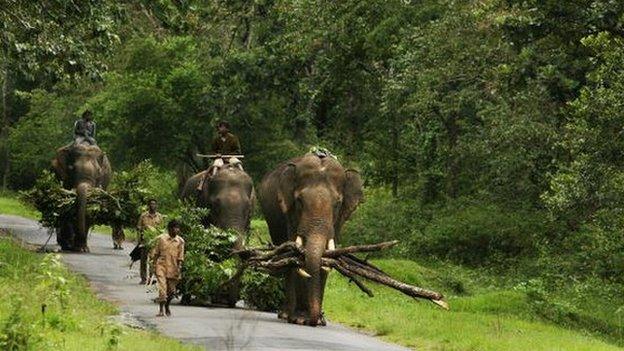Why India and Nepal's forest fires are worrying scientists
- Published
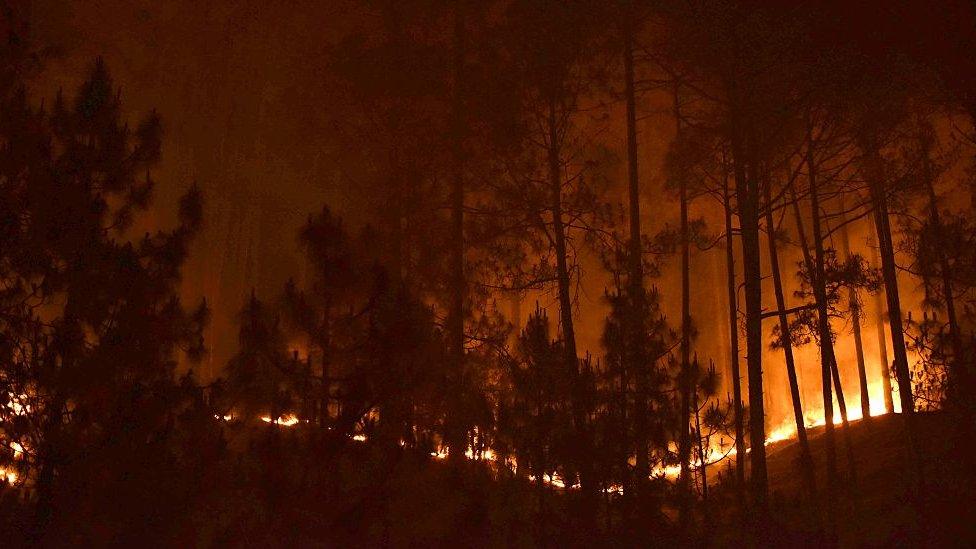
Forest fires in some parts of northern India have been the strongest in one and a half decades
The lush-green mountains in the background usually make the famous Nainital lake in Uttarakhand state of northern India more picturesque.
But for several weeks now haze from forest fires has hidden the mountains, and the lake's beauty has visibly shrunk.
"You can smell the haze from this side of the lake where I live," said Shekhar Pathak, an expert on the history of forests in the region.
"Not just the pine trees that are highly prone to fires, even the oak forests are burning and that means the situation is quite serious."
Locals in areas worst-affected by forest fires told the BBC they don't sleep at night these days.
"We wake up in the middle of the night and check around the forests to make sure the fires are not approaching us," said Kedar Avani of Banaa village in Pithoragarh district, the eastern-most Himalayan district in the state.
"Fires have eaten up our haystacks and grass stored for our livestock, and now we fear our houses will be gutted too."
Mr Avani said that the fires were so strong that the heat could be felt even at a distance of 20 metres. "There is no way we can put them out," he said.

Scientists say forest fires in Uttarakhand have led to record carbon emissions since 2003
Record forest fires
Scientists say the forest fires in some parts of northern India and neighbouring Nepal have been the strongest in the past 15 years. The European Union's Copernicus Atmospheric Monitoring Service (CAMS) said that Uttarakhand's forest fires emitted nearly 0.2 mega tonnes of carbon, external in the past one month, a record since 2003.
Based on the analysis of satellite pictures, it estimated Nepal emitted nearly 18 mega tonnes of carbon in the same period, the highest since 2016 when it emitted 27 mega tonnes of carbon.
"This shows the intensity with which the fires are burning in the region and it is quite worrying," said Mark Parrington, senior scientist at CAMS.
Nearly 20 people have been reportedly killed by the fires in Uttarakhand and Nepal. Hundreds of thousands of hectares of forests are believed to have been razed although official figures are yet to be published.

Dehradun is the capital of Uttarakhand

At one point last month, around 500 forest fires were recorded in Nepal. Its air quality has remained at hazardous levels for several days now.
Some of the Himalayan nation's forests and national parks adjoin India's forested and protected areas which means that fires can spread both ways.
Prolonged dry spell
Many parts of north India and Nepal have seen a prolonged dry spell in the past few months, leaving forests "tinder dry".
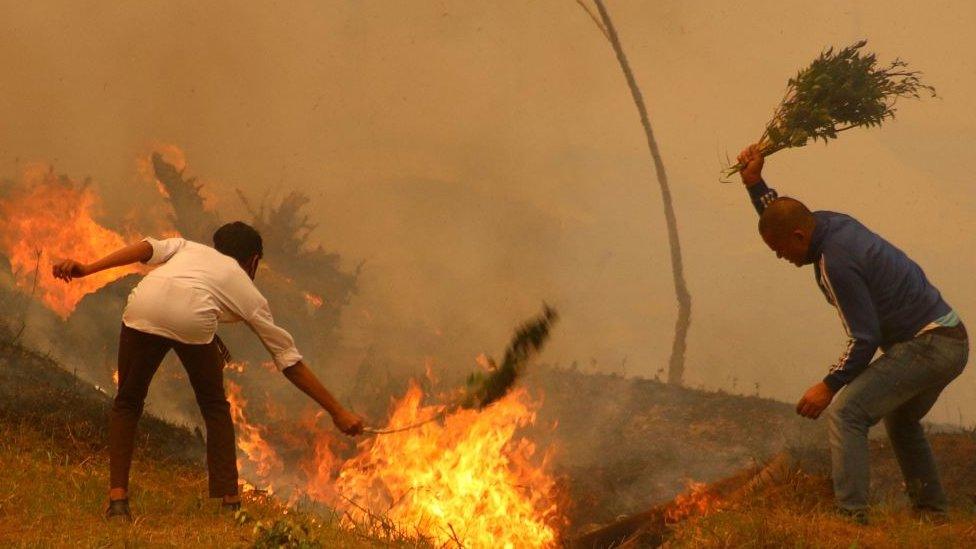
Local communities play a crucial role in fighting forest fires
"It has neither rained nor snowed for several months now," said Mr Pathak. "That is why even oak forests are burning up - the ground they stand on is totally dry."
What has also left people in the region worried is that the forest fires are usually at their peak in May. The fear that the worst is yet to come.
Scientists say although climate change can't be directly blamed for forest fires, it has intensified the dryness in the region.
Authorities in Uttarakhand and Nepal have said several forest fires have been caused by stubble burning in agricultural lands adjoining forests.
But experts say the problems are not just limited to the weather and stubble burning.
"Government planners usually think about forests just as carbon sinks. They often forget forest fires, and how they can become sources of carbon emissions," said Vijendra Ajnabi, a natural resource management expert with Oxfam, who is based in India's Chhattisgarh state.
"Forest fires are yet to be a priority issue. That is why you don't usually hear this being discussed in the parliament."
Forest fires no natural hazard?
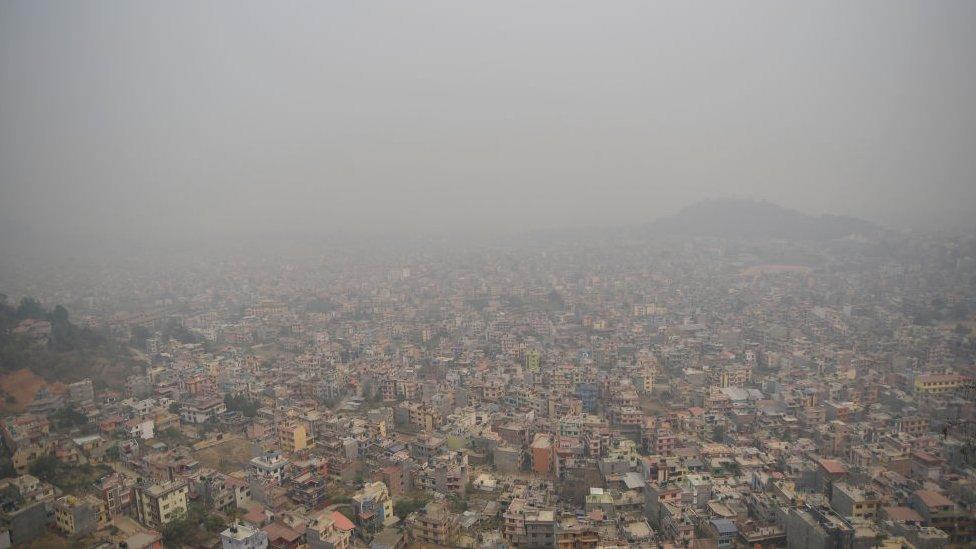
Air quality in the region, particularly in Nepal, has become hazardous largely due to forest fires
India's National Disaster Management Authority (NDMA) has not recognised forest fires as natural hazards.
On its website, it has listed cyclone, tsunami, heatwave, landslide, floods and earthquakes under such category.
An analysis done by the Forest Survey of India in 2019 showed that nearly 36% of the country's forests are prone to fires and nearly one third of that is highly vulnerable.
"The reason why we have not listed forest fires as natural hazards is because in India most of such fires are deliberately caused by people mainly for agricultural purposes and, therefore, it is an anthropogenic [man-made] hazard," said Krishna Vatsa, a member of the NDMA.
"But we do recognise that forest fires are becoming a serious hazard and that is why we are working with forest departments and other agencies of all the states to deal with the issue."
Deficiencies in fire service
Based on the findings of Standing Fire Advisory Committee, the NDMA in the past had highlighted serious shortcomings in the country's fire services.
The committee had found that there was more than 80% of deficiency in fire-fighting and rescue vehicles and the number of fire services personnel in the country was 96% less than what was required.
"We have made progress since those findings but we know we have to do much more," said DK Shami, an adviser and a senior official at India's Directorate General of Fire Services.
"Then we had around 50,000 fire personnel and now we have more than 75,000 and growing."
In a significant rise in budget allocation compared to the past, the government is now giving 50bn rupees ($670m) to the states for fire services between this year and 2026 - that's five times over what was usually given in the past."
But experts on the ground say that has hardly helped in fighting forest fires in many places.
"There is almost no preparedness on the part of the administration while the fires are becoming more and more intense," Aniruddh Jadeja, an environmental activist in Kumaon district of Uttarakhand, said.
"Our forests are so big and the number of staff in government forest departments is very limited. So they can barely do anything when there is a serious forest fire."
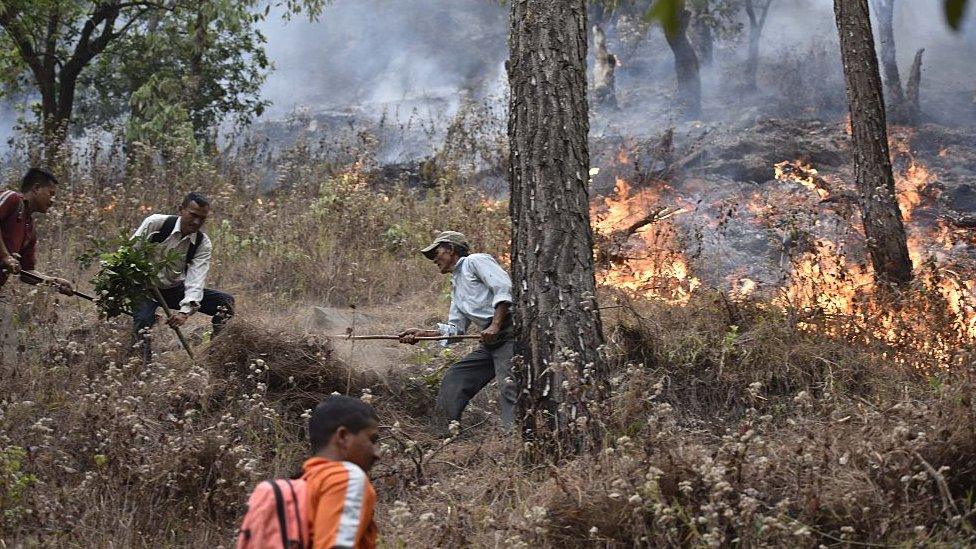
The number of firefighting personnel in India is inadequate given the fire risks its forests face
Forest experts in Nepal have something similar to say.
"We hear about millions of dollars the country receives as climate finance from foreign donors, but nothing is being spent to prevent and fight forest fires," said Bharati Pathak, president of the Federation of Community Forestry Users in Nepal.
"We had earned global recognition as a success story of community forestry and now forest fires are threatening to undo all that," she added.
Nepalese government officials said they were doing all they could.
"With limited resources, we are doing our best but the fires are on difficult geography like mountain slopes and the dry weather and people deliberately causing fires have not helped," said Prakash Lamsal, spokesperson at Nepal's forest ministry.
"We all have seen how difficult it is to contain forest fires even in the developed world."
Local communities' help
Experts said local communities living within or nearby forests could help in putting fires out to a great extent but that is not happening.
"That is because there is a serious trust deficit between these communities and the forest administrations of the states," said Mr Pathak.
"Many indigenous communities want their rights including access to forest resources to be respected and, therefore, there are tensions between them and forest administrations and that clearly has affected the fight against forest fires."
Local communities in different forested areas of India have protested, arguing their rights to forest lands and other resources have been undermined and violated by conservation policies.
Authorities say they are protecting forests as per the law.
"Authorities usually put the blame [for forest fires] on communities but they can actually work with these local people to keep the fires out," said Mr Ajnabi.
Aerial footage shows the extent of the fires
Related topics
- Published2 May 2016
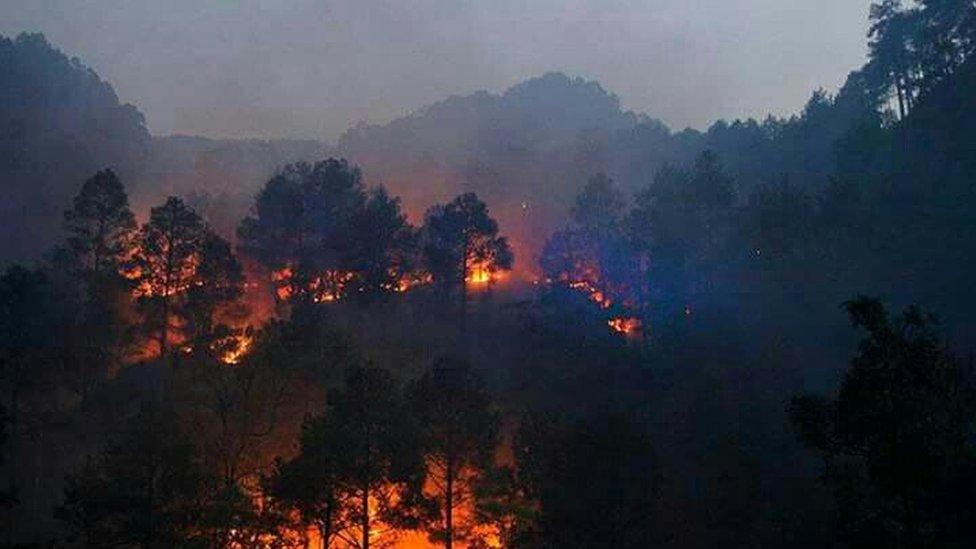
- Published20 March 2014
